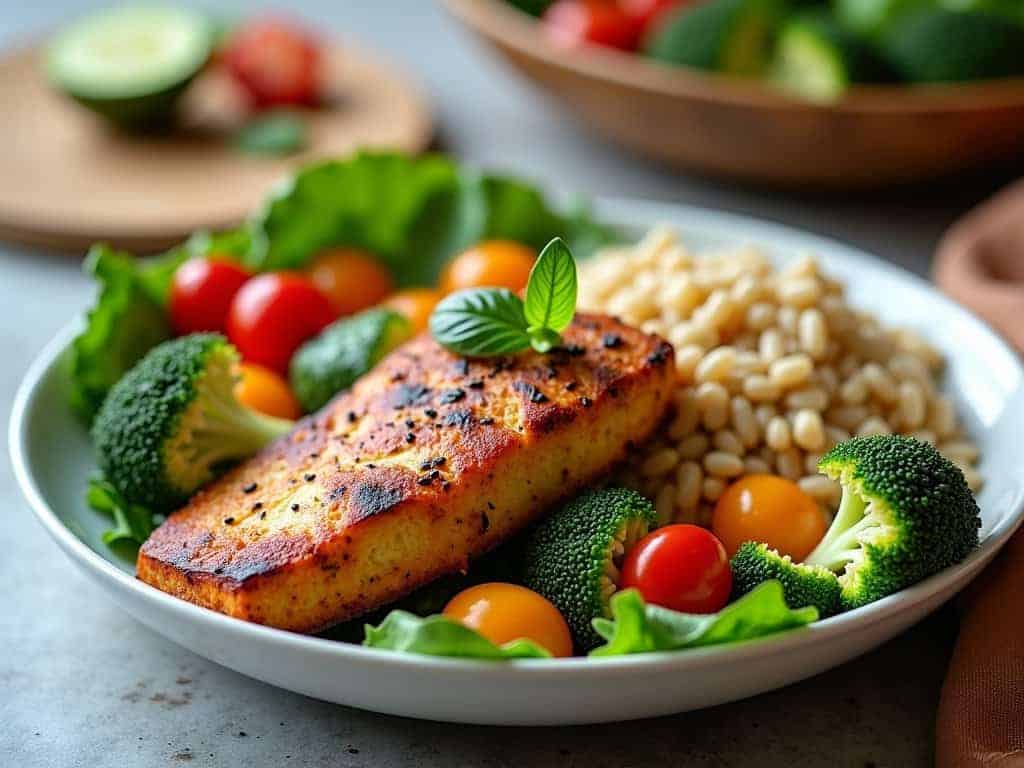Most aspiring home chefs dream of mastering the art of creating flavorful and authentic teriyaki dishes, but many are intimidated by the complexity of the sauce. Fear not! This comprehensive guide will walk you through the steps to perfecting your teriyaki sauce, whether you prefer it sweet, salty, or with a hint of umami. From selecting the right ingredients to achieving the ideal glaze consistency, we’ve got you covered.
Key Takeaways:
- Homemade Teriyaki Sauce: Making your own teriyaki sauce allows you to control the ingredients and customize the flavors to your liking.
- Marinating Techniques: Marinating proteins in teriyaki sauce helps infuse them with flavor and tenderize the meat for a delicious result.
- Cooking Methods: From grilling and broiling to pan-searing and stir-frying, there are various cooking methods to elevate your teriyaki dishes and add depth to your cooking skills.
Understanding Teriyaki
You may be familiar with the delicious flavors of teriyaki, but do you really know what goes into this iconic Japanese dish? In this guide, we will examine into the history and basic components of teriyaki sauce to help you elevate your home culinary skills to master the art of teriyaki cooking.
Historical Background of Teriyaki
Teriyaki is a cooking technique that originated in Japan. The word “teriyaki” is a combination of two Japanese words: “teri” meaning luster and “yaki” meaning to grill or broil. This cooking method involves grilling or broiling meats or seafood and glazing them with a sweet and savory sauce, typically made from soy sauce, mirin, and sugar. Teriyaki sauce adds a delicious caramelized coating to the protein, giving it a unique flavor profile that is beloved worldwide.
Basic Components of Teriyaki Sauce
Basic teriyaki sauce typically consists of soy sauce, mirin (a sweet rice wine), sugar, and sometimes sake (Japanese rice wine). The soy sauce provides a salty umami base, while the mirin and sugar add sweetness and shine to the sauce. Sake can be used to enhance the depth of flavor in the sauce. These components are simmered together until the sauce thickens and develops a rich, glossy consistency.
When making teriyaki sauce at home, it is important to balance the flavors of saltiness, sweetness, and acidity to achieve the perfect harmony in your dish. Experiment with different ratios of soy sauce, mirin, and sugar to tailor the sauce to your taste preferences.
Essential Tools and Ingredients
Must-Have Kitchen Tools for Teriyaki Preparation
Even the most basic of kitchens can produce stellar teriyaki dishes with the right tools at hand. If you’re serious about perfecting this delicious Japanese staple, investing in a few key items will make all the difference. A non-stick skillet or a good quality grill pan is crucial for achieving that signature caramelized teriyaki glaze on your meats or vegetables. A pair of long cooking tongs will help you handle your ingredients with precision and care, especially when it comes to flipping and basting.
Sourcing Quality Ingredients for Authentic Flavor
Even the best cooking skills can’t compensate for subpar ingredients when it comes to teriyaki. If you want to elevate your dish to an authentic level, sourcing high-quality ingredients is non-negotiable. Plus, using authentic Japanese soy sauce, such as Kikkoman or Yamasa, is crucial for that distinctive umami flavor that defines teriyaki. Opt for fresh garlic and ginger for added depth of flavor, and don’t skimp on the mirin – a sweet rice wine that balances the salty and savory notes in the sauce.
Preparing the Perfect Teriyaki Sauce
Once again, in your quest to elevate your home culinary skills, mastering the art of preparing the perfect teriyaki sauce is vital. This versatile sauce can be used to glaze meats, as a marinade, or drizzled over vegetables for extra flavor.
Step-by-Step Guide to Making Teriyaki Sauce
| Ingredients | Measurements |
| Soy Sauce | 1 cup |
| Water | 1/2 cup |
| Brown Sugar | 1/4 cup |
| Honey | 2 tablespoons |
| Garlic | 2 cloves, minced |
| Ginger | 1 teaspoon, minced |
| Cornstarch | 1 tablespoon |
Tips for Achieving the Ideal Consistency and Flavor
Now, achieving the ideal consistency and flavor for your teriyaki sauce is crucial for a successful dish. Here are some tips to help you get it just right:
- Balancing Flavors: Adjust the sweetness, saltiness, and tanginess to your preference by tweaking the ratio of sugar, soy sauce, and vinegar.
- Thickening Agent: If you prefer a thicker teriyaki sauce, gradually add cornstarch mixed with water until the desired consistency is reached.
The key to perfecting your teriyaki sauce lies in finding the right balance of flavors and textures. Experiment with different ingredient measurements and cooking times to achieve a sauce that suits your palate. Keep in mind, practice makes perfect, so don’t be afraid to customize the recipe to your liking. Achieving the ideal teriyaki sauce will take your home cooking skills to the next level and impress friends and family with your culinary prowess.
The Art of Marinating
Not just a simple soaking process, marinating is an necessary technique that can elevate the flavor profile of your dishes to new heights. Mastering the art of marinating involves understanding the ingredients, flavors, and techniques that contribute to creating delicious and tender dishes.
How-To Marinate Different Proteins
Proteins such as chicken, beef, fish, and tofu each have their unique qualities that can be enhanced through marination. Chicken benefits from marinades that offer acidity for tenderness and flavor, while beef can withstand bold flavors like soy sauce and garlic. Fish is more delicate and requires shorter marinating times with gentle citrus or herb-based marinades. Tofu is a blank canvas that absorbs flavors well, making it ideal for intense marinades like teriyaki.
Timing and Techniques for Maximum Flavor Infusion
Assuming the role of timekeeper, controlling the marinating time is crucial to ensure that the flavors penetrate the proteins effectively. Different proteins require different marinating times – chicken and beef benefit from longer marinating periods, While fish and tofu require shorter marinating times to prevent the protein from becoming mushy.
Different ingredients in your marinade can also impact the marinating process. Ingredients like citrus juices and pineapple contain enzymes that break down proteins, which is great for tenderizing tougher cuts of meat. On the other hand, salt can draw out moisture and make the protein tough if left to marinate for too long. Understanding these factors will help you craft the perfect marinade for your dish.

Cooking Techniques
Grilling Tips for that Perfect Char
Many home cooks love the flavor and texture that grilling adds to their dishes. To achieve that perfect char on your teriyaki creations, it’s important to follow these grilling tips:
- Preheat the grill: Make sure your grill is hot before placing your food on it to get those beautiful grill marks.
- Marinate your ingredients: Marinating your meat or vegetables not only adds flavor but also helps prevent them from sticking to the grill.
- Flip only once: To develop a nice char, resist the temptation to constantly flip your food. Let it cook undisturbed for a few minutes before flipping.
The key to achieving that perfect char is to ensure your grill is hot and properly prepped before cooking. Grilling not only adds smoky flavors but also enhances the overall taste and appearance of your teriyaki dishes.
Pan-Frying and Sautéing for Quick and Savory Meals
Even for those pressed for time, pan-frying and sautéing are great techniques to create quick and flavorful teriyaki dishes. The key to successful pan-frying and sautéing lies in controlling the heat and using the right cooking fats.
On top of being quick, pan-frying and sautéing are versatile techniques that can be used for various ingredients, from meats to vegetables. The controlled heat allows for even cooking and browning, enhancing the flavors of your dishes.
Understanding Teriyaki Fusion Cooking
Teriyaki fusion cooking combines traditional Japanese teriyaki flavors with elements from other cuisines. This innovative approach brings a new twist to classic teriyaki recipes, offering a unique and exciting dining experience. By experimenting with different ingredients and cooking methods, you can create fusion dishes that cater to diverse tastes and preferences. The possibilities are endless when it comes to teriyaki fusion cooking, making it a fun and creative way to elevate your home culinary skills.
Accompaniments and Side Dishes
Selecting Complementary Vegetables and Grains
Your choice of vegetables and grains can greatly enhance the overall flavor profile of your teriyaki dish. When identifying vegetables to accompany your teriyaki, opt for colorful, crunchy options like bell peppers, broccoli, snap peas, or baby corn. These veggies not only add visual appeal but also provide a delightful contrast of textures to your meal. In terms of grains, consider serving your teriyaki with steamed jasmine rice or nutty quinoa for a well-rounded plate.
How-To Prepare Sides That Enhance Your Teriyaki Dish
You can elevate your teriyaki dish by pairing it with sides that complement its sweet and savory notes. Some popular choices include a fresh cucumber salad with rice vinegar dressing, a sesame ginger slaw, or a simple miso soup. These side dishes not only provide a balance of flavors but also offer a refreshing contrast to the richness of the teriyaki sauce. To enhance your dining experience, consider incorporating a variety of textures and flavors into your side dishes.
Some other fantastic side dish options to consider include steamed edamame sprinkled with sea salt, garlic green beans sautéed in sesame oil, or crispy tempura vegetables. These sides not only add depth to your meal but also provide additional nutrients and colors to your plate.
This careful selection of complementary vegetables, grains, and side dishes will elevate your teriyaki meal to a new level of culinary excellence. By paying attention to these details, you can create a well-balanced and delicious dining experience that will impress your guests and satisfy your taste buds.
Plating and Presentation
Arranging Your Teriyaki for Visual Appeal
All it takes is a little effort and attention to detail to transform a simple dish into a visually stunning masterpiece. When arranging your teriyaki on the plate, consider the balance of colors, textures, and shapes. Start by placing the protein, whether it’s chicken, beef, or tofu, at the center of the plate. Surround it with colorful vegetables like steamed broccoli, carrots, and bell peppers to add vibrancy to the dish. Finish off by garnishing with sesame seeds or sliced green onions for an added touch of elegance.
Final Touches for a Professional-Looking Dish
Regarding creating a professional-looking dish, the final touches make all the difference. Pay attention to the details by wiping any sauce smudges off the rim of the plate for a clean presentation. Utilize fresh herbs or microgreens to add a pop of color and freshness to the dish. Lastly, drizzle a small amount of teriyaki sauce around the plate for a decorative touch that also enhances the overall flavor.
Appeal: Note, the way you present your teriyaki not only affects its visual appeal but also influences how it is perceived by your guests. Putting in the extra effort to plate and present your dish in an aesthetically pleasing manner shows that you care about the dining experience you are providing. By following these simple tips, you can elevate your home culinary skills and impress your family and friends with a professional-looking teriyaki dish.
Advanced Teriyaki Variations
To truly elevate your home culinary skills and impress your guests, consider experimenting with advanced teriyaki variations. From exploring regional twists to incorporating teriyaki flavors into other cuisines, the possibilities are endless.
-
Exploring Regional Twists Modern Adaptations Traditional Japanese teriyaki Fusion teriyaki dishes Hawaiian-style teriyaki Vegan teriyaki options Korean BBQ-inspired teriyaki Teriyaki glazes for grilled vegetables
Exploring Regional Twists and Modern Adaptations
Modern teriyaki variations go beyond the traditional Japanese flavors, incorporating influences from different regions and modern culinary trends. Experiment with fusion teriyaki dishes by mixing and matching ingredients to create unique flavor profiles. Explore Hawaiian-style teriyaki with the addition of pineapple or try Korean BBQ-inspired teriyaki with a hint of spice.
How-To Incorporate Teriyaki Flavors into Other Cuisines
Variations on teriyaki flavors can also enhance dishes from various cuisines. Teriyaki glazes can add a sweet and savory element to grilled vegetables, tofu, or even stir-fried noodles. The versatility of teriyaki sauce allows you to infuse your favorite dishes with rich umami flavors that complement a wide range of ingredients.
Health and Dietary Considerations
Creating Healthier Teriyaki Options
Unlike traditional teriyaki recipes that are often high in sugar and sodium, creating healthier teriyaki options can be easy with a few simple swaps. Some key ingredients to look out for are low-sodium soy sauce, reduced sugar or sugar-free teriyaki sauce, and incorporating more vegetables into the dish. By using lean protein sources such as chicken or tofu and opting for whole grain rice instead of white rice, you can significantly reduce the calorie and fat content of your teriyaki dish.
Adapting Recipes for Dietary Restrictions
Some considerations need to be made when adapting teriyaki recipes for dietary restrictions such as gluten intolerance, vegetarianism, or veganism. When making teriyaki sauce, be sure to use gluten-free soy sauce or tamari for a gluten-free option. For vegetarians and vegans, substituting meat with tofu or tempeh can provide a protein-rich alternative. Considerations should also be made when sourcing ingredients to ensure they align with specific dietary requirements.
Creating delicious and healthy teriyaki dishes can be easy with a few mindful adjustments to traditional recipes. By focusing on nutrient-dense ingredients and making thoughtful swaps, you can elevate your home culinary skills while keeping health and dietary considerations in mind.
Storing and Reusing Teriyaki
Despite its savory and delicious flavor, teriyaki sauce is versatile and can be stored and reused for future meals. Proper storage techniques can help maintain the quality and taste of the sauce, ensuring that your dishes continue to be flavorful.
Best Practices for Storing Leftover Sauce and Dishes
Practices for storing leftover teriyaki sauce involve transferring it into an airtight container and refrigerating it promptly. Make sure the container is sealed tightly to prevent any contamination. Leftover teriyaki dishes should also be stored in airtight containers to maintain freshness. It is crucial to consume the leftover teriyaki sauce within a few days to prevent spoilage and ensure the best flavor.
Creative Ideas for Next-Day Teriyaki Meals
The versatility of teriyaki sauce extends to the creative ideas you can explore for next-day meals. Consider using leftover teriyaki sauce as a marinade for meats or tofu for an easy and flavorful meal. You can also drizzle the sauce over stir-fried vegetables or use it as a dip for spring rolls. The options are endless, allowing you to experiment and create exciting dishes.
Storing leftover teriyaki sauce and dishes not only reduces food waste but also provides you with the opportunity to explore new flavor combinations. With these best practices and creative ideas, you can elevate your culinary skills and make the most out of your teriyaki sauce.
Summing up
As a reminder, mastering the art of making teriyaki at home is a rewarding skill that can elevate your culinary abilities. With this detailed how-to guide, you now have the knowledge and tools to create delicious teriyaki dishes in your own kitchen. Remember to experiment with different ingredients and cooking techniques to customize your teriyaki sauce to suit your taste preferences.
By following these step-by-step instructions and tips, you can impress your family and friends with your homemade teriyaki creations. With practice, patience, and a passion for cooking, you can become a teriyaki master in no time. So, grab your apron, fire up the stove, and start cooking up some delicious teriyaki dishes today!
FAQ
Q: What is teriyaki sauce made of?
A: Teriyaki sauce is typically made of soy sauce, sake, mirin, and sugar. These ingredients are simmered together to create a delicious sweet and savory sauce.
Q: How do I use teriyaki sauce in my cooking?
A: Teriyaki sauce can be used as a marinade for meats such as chicken, beef, or fish. It can also be used as a glaze for grilling, baking, or stir-frying dishes.
Q: What is the difference between teriyaki sauce and soy sauce?
A: Teriyaki sauce is sweeter and thicker than soy sauce. It also usually contains additional ingredients like mirin and sugar, which soy sauce does not have.
Q: Can I make teriyaki sauce at home?
A: Yes, you can make teriyaki sauce at home using simple ingredients like soy sauce, mirin, sake, and sugar. There are many easy-to-follow recipes available online.
Q: How long can I store teriyaki sauce?
A: Homemade teriyaki sauce can be stored in the refrigerator for up to 2 weeks. Store-bought teriyaki sauce typically has a longer shelf life and can be stored according to the expiration date on the bottle.






